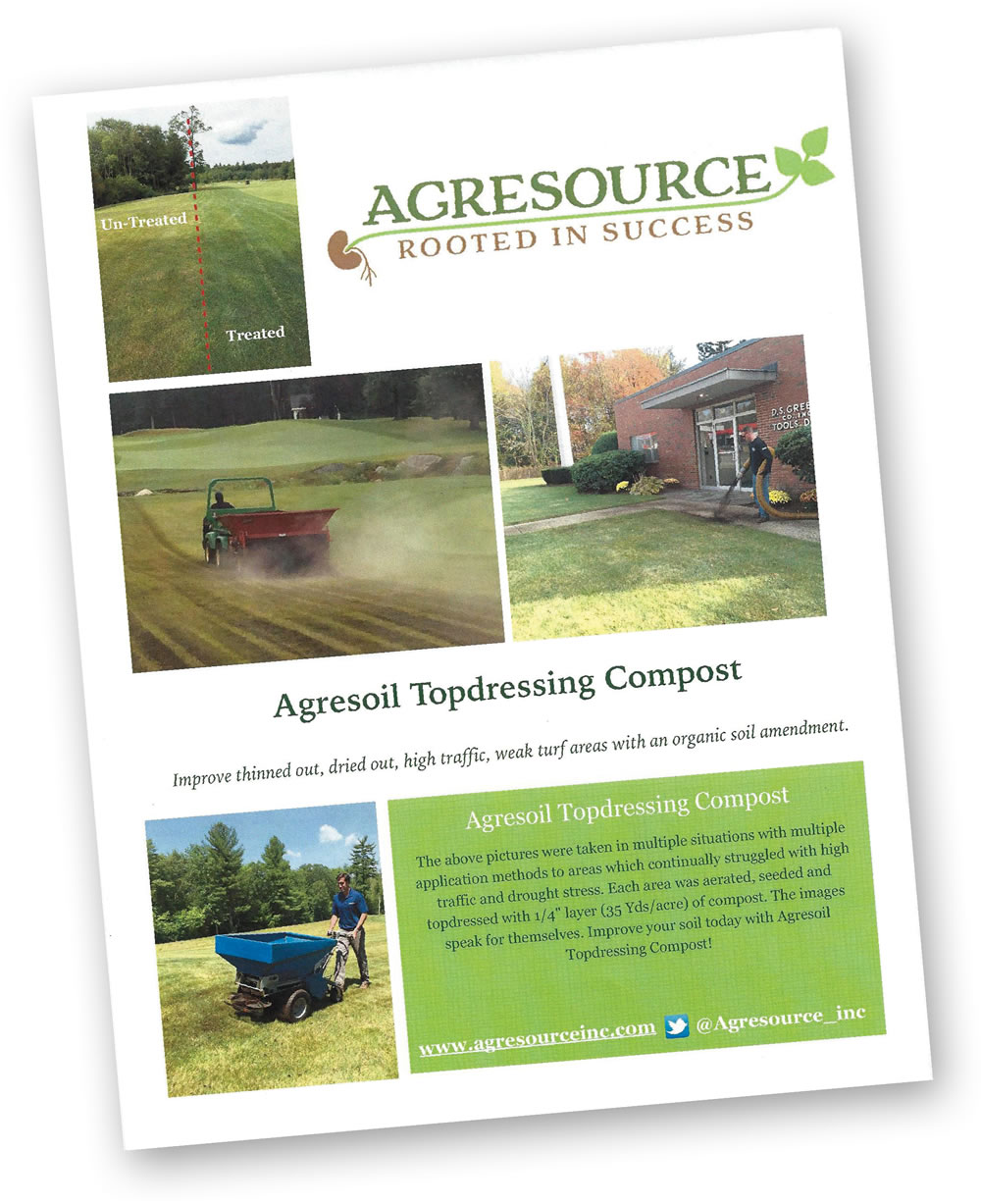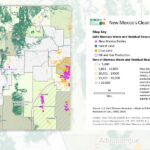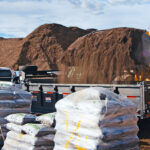Ron Alexander
BioCycle January 2019
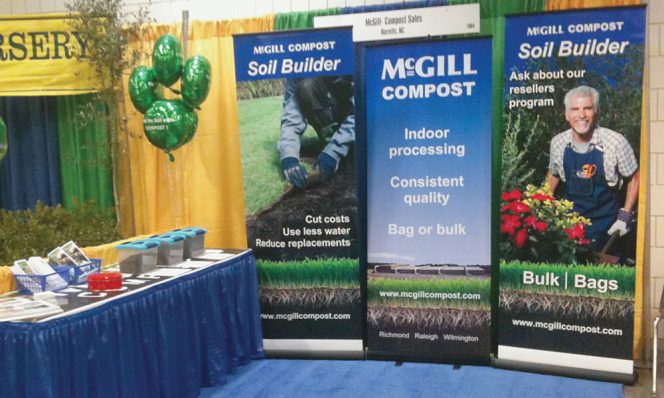
While social media and electronic promotional opportunities have their place, nothing replaces face-to-face calls and interacting with potential end users at trade conferences. Image courtesy of R. Alexander Associates, Inc.
Many factors affect the marketability of a particular compost. First, it needs to possess the characteristics required for a specific application, or market segment (e.g., landscapers, wholesale nursery). Selling the product at an appropriate pricing level, and providing good customer service, are also essential. However, without appropriate sales activity, these factors alone will not enable improved product sales success. History has shown that appropriate engagement of the marketplace is the key factor in developing a successful compost marketing program.
Key to breaking into markets is having the proper technical understanding of the segment in which the compost will be sold. That, however, takes investment — in time, money and staffing — to most effectively approach the marketplace. Investing in staff and staff education is incredibly important to the marketing success of not only individual companies, but also the overall organics recycling industry. Although the U.S. composting industry is about 40 years old, the vast majority of compost manufacturers do not employ full-time sales staff. Product development and marketing (and sales) are either not taken seriously enough, or facility owners and/or managers may simply believe that they cannot afford a salesperson, or that other revenue sources, e.g., tipping fees, are adequate enough.
It is understood that the innate regional demand for compost (and other soil amendments) is based on factors such as population, business demographics (types and number of professional end users in the reachable marketplace), and available green space. However, experience has shown that markets grow faster when more companies are competing fairly against one another in a geographical market area. This is especially the case where compost education is needed, since the product gains more credibility if five different composters approach a specific end user once, instead of one composter fives times.
Interestingly, the composting industry has been able to expand compost usage by inventing new applications for compost, as well as educating the marketplace about the benefits of soil enhancement on plant growth and environmental improvement. Education of the marketplace about soil improvement has even allowed peat sales to continue to increase (based on U.S. Geological Survey data), while the composting industry has continued to expand (with compost preferred over peat for landscaping applications). That said, the marketplace is getting more crowded, and compost is being challenged as the dominant soil amendment product. It still competes against peat, as well as manures, wood-based soil amendments, humic substances, digestates, worm castings, microbial packages, etc. So, focus is required in order to position your compost product for sales success.
Market/Product Positioning
Positioning a product for distribution within an existing market takes both forethought and knowledge of the specific market area, as well as the product. Market positioning considerations include the following:
• Geography: Where will you “geographically” concentrate your marketing, and in how large of a geographical area? This determination will be based on factors such as competition, transportation costs, business and population demographics, and possibly bulk density (since it impacts the volume of compost that can be shipped on a truck) of the product.
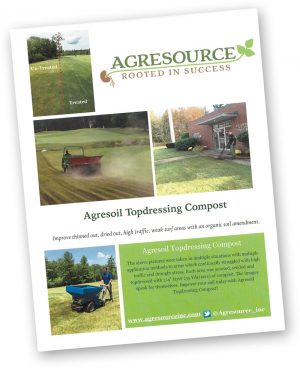
Market positioning considerations include typical characteristics of your product and how well it meets the requirements of your end markets, e.g., topdressing. Image courtesy of R. Alexander Associates, Inc.
• Market Segments: In which market segments will you concentrate your sales (e.g., nurseries, landscapers, etc.)? This determination is based on factors such as business and population demographics, product characteristics, staff skills and knowledge of the market segment, etc.
• Product/Application: What are the typical characteristics of your product, and what specific type(s) of product will you actually manufacture (e.g., soil amendment, mulch, topdressing, etc.) to meet the requirements of your end users? This determination is based on things such as competition, access to application equipment, end user product requirements (and market sophistication), facility infrastructure/equipment, etc.
Good market research can assist a composter in making these planning decisions, as will prior knowledge of the regional “green industry” (end use industry). Other internal and external factors also influence how you position your product for sale, including:
• Competition: What products are you selling against? How do you compare with them on a quality and economic basis?
• Product or Feedstock Characteristics: Does your feedstock or finished product possess any characteristics which make it unique, allowing for niche markets to be developed (e.g., high nutrient content) or limiting the product’s use within specific markets (e.g., high contaminant levels or electrical conductivity)? Along with the innate characteristics of the feedstock and the finished product, the ability to produce a consistent product affects the market segments that can be targeted, as well as the product’s value. An example is the sale of a biosolids compost that is finely screened, and high in slow release nitrogen and iron for use as a turf topdressing.
• Sales Price: Is there a specific value you must obtain for the product in order to meet necessary revenue requirements of your organization? How does the sales price compare to your competitions’?
• Transportation: Do you have access to the necessary size and number of trucks? Are you able to reduce your transportation costs to provide your company with an economic sales advantage, or allow you to transport the product farther (expand geographical market area)?
• Infrastructure: Do you have the equipment necessary (e.g., screens) to produce the finished product that you need to sell? Do you have enough space to properly produce and stockpile your product for peak market demand? Is covered storage or screening a possibility?
• Technical Expertise: Does your company possess (or can it access) the technical expertise necessary to sell to highly technical market segments (e.g., golf courses, nurseries)?
All of these factors must be considered when working to properly position a product in the marketplace. Also, evaluating these considerations and making these types of positioning decisions in the early stages of planning and market development enables a compost manufacturer or marketer to work much more efficiently (economically) and effectively.
Market Development Investment
Having researched why certain composting facilities succeed or fail in their market development endeavors, one fact seems very clear — most facilities that do not invest the proper resources (time, effort, money) into market development, and those which simply do not take the task seriously, have a much greater frequency of failure. A general rule of thumb is that it takes 3 to 5 years of intense market development (face-to-face sales) to build a market that is somewhat sustainable. This time estimate, of course, is very dependent upon the volume of compost generated, as well as many other factors. Obviously, the more compost produced, or expected to be produced, the earlier compost marketing needs to begin and the greater the resources you need to commit towards it.
Successful market development (developing a customer base) is not usually accomplished by placing a few advertisements in a newspaper or industry journal, or by completing compost end use research with a local university. These activities are merely tools within a market development program. Nothing replaces actual sales activities, such as completing “sales calls” (face-to-face), interacting with potential end users at trade conferences, etc. Social media and electronic promotional opportunities also have their place in marketing and sales activities. However, they should not be deemed a panacea or replacement for face-to-face sales, especially with bulk compost products.
Face-to-face sales require certain skills and knowledge — an investment in time, effort and money. If done properly, this investment will pay back great returns for many years. The overall market development investment should reduce over time, as the marketing program and customer base become more established. If done properly, there will also be a transition in the overall market development program, from an aggressive phase to more of a maintenance phase.
When larger facilities are being developed, it is often worthwhile to start product marketing before the actual product is available. “Premarketing” better prepares the market for the new compost product. Activities may include various educational workshops, working to gain placement of the product in specifications, and development of a distribution chain. Having a sample of the forthcoming product — produced through a pilot scale production trial — is helpful in premarketing. The sample can then be analyzed to determine likely product characteristics and be used to visually illustrate its physical characteristics to potential end users. These types of activities allow for faster market penetration when the product actually becomes available.
However, this activity does possess some risk, especially if product availability is significantly delayed, or the characteristics of the product are significantly different than expected. If these activities are not completed during the design and construction phases of the facility, they should be completed, along with development of a marketing plan, at a later date.
Organizations can succeed in compost market development, but the appropriate investment must be made. Get educated about the product and market, then invest in the essential sales and marketing tools.
Ron Alexander is president of R. Alexander Associates, Inc., which specializes in market research and development for compost and other organic recycled products. He has almost 35 years of experience in the industry, and is the author of “The Practical Guide to Compost Marketing and Sales” (second edition published by The JG Press, Inc.). This article contains excerpts from the Guide. The author can be contacted at 919-367-8350, Ron@alexassoc.net (www.alexassoc.net).


